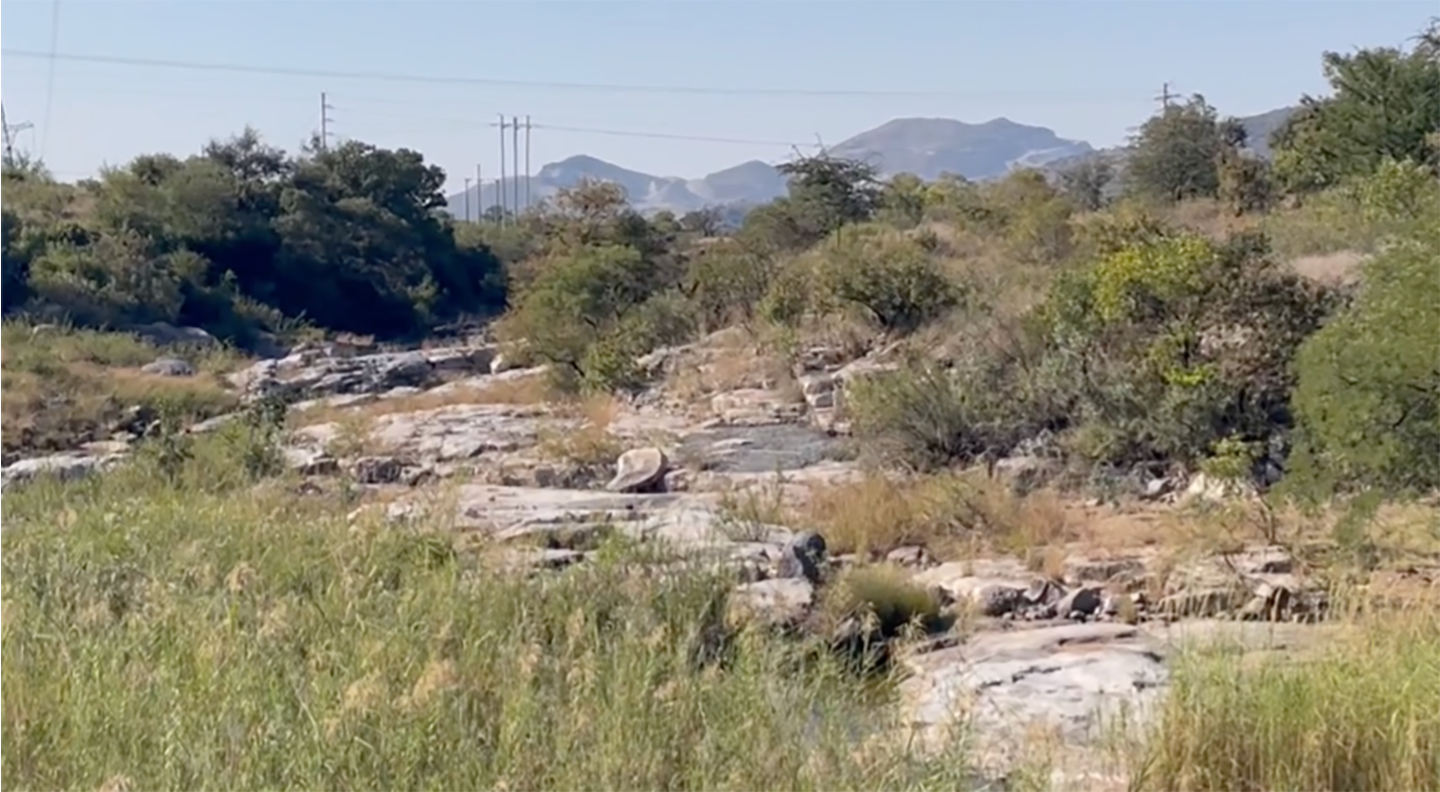2-billion-year-old microbes found alive in ancient South African rock
Researchers found 2-billion-year-old microbes living in ancient rock, offering insights into Earth’s past and life on other planets

This picture shows a very famous outcrop where nearly horizontal black and white layers are observed. The BIC made of layers of igneous rock in a basin shape, formed over a period of about 1 million years, after which it seems to have barely changed. (CREDIT: Y. Suzuki)
Microbes have been found alive and well inside ancient rock, offering an extraordinary glimpse into Earth's distant past. Researchers studying a 2-billion-year-old rock sample from the Bushveld Igneous Complex (BIC) in South Africa discovered that colonies of microbes have survived deep beneath the Earth's surface for eons, living in near-isolation.
These microbes offer scientists a chance to understand the evolution of life on Earth and may even shed light on the possibility of extraterrestrial life.
The BIC, a massive geological structure spanning around 66,000 square kilometers (approximately the size of Ireland), is one of the oldest and largest igneous formations on Earth. Formed when magma cooled below the surface, this area is renowned for its rich deposits of platinum and other ores. But it's not just valuable minerals hiding within; it turns out the BIC has also been a stable, undisturbed habitat for ancient microbial life.
Researchers obtained the rock core sample from around 15 meters belowground, a depth that allowed the rock to remain relatively unchanged over billions of years. The sample, part of a project supported by the International Continental Scientific Drilling Program, a nonprofit that facilitates drilling at significant geological sites, was carefully extracted, sliced, and analyzed.
What the researchers found was astonishing: microbial cells were tightly packed into the fractures of the rock, their existence sustained by the sealed environment. These tiny organisms, encapsulated by clay that filled any surrounding gaps, had no means to escape, nor was there any external contamination.
This discovery marked the oldest instance of living microbes found inside ancient rock, surpassing the previous record, which dated back 100 million years beneath the ocean floor. The discovery of such ancient life opens up new possibilities for understanding how life on Earth has evolved and persisted in the harshest of environments.
Yohey Suzuki, the lead researcher and an associate professor at the University of Tokyo’s Graduate School of Science, explained, “We didn’t know if 2-billion-year-old rocks were habitable. Until now, the oldest geological layer in which living microorganisms had been found was a 100-million-year-old deposit beneath the ocean floor, so this is a very exciting discovery. By studying the DNA and genomes of microbes like these, we may be able to understand the evolution of very early life on Earth.”
Related Stories
The team employed advanced techniques to ensure the microbes they found were native to the rock and not a result of contamination.
A combination of infrared spectroscopy, electron microscopy, and fluorescent microscopy allowed them to stain and analyze the DNA of the microbes while confirming the proteins within the microbes and surrounding clay were untouched by modern contaminants. The precision and care taken during the analysis were crucial to validating that the microorganisms were indeed from 2 billion years ago.
This research goes beyond Earth’s history. Suzuki expressed his excitement about the broader implications of the study, particularly regarding the search for extraterrestrial life. "I am very interested in the existence of subsurface microbes not only on Earth but also the potential to find them on other planets," he said.
"NASA’s Mars rover Perseverance is currently due to bring back rocks that are a similar age to those we used in this study. Finding microbial life in samples from Earth from 2 billion years ago and being able to accurately confirm their authenticity makes me excited for what we might be able to now find in samples from Mars,” he continued.
The significance of this discovery lies not only in the extraordinary age of the microbes but also in what it tells us about the conditions under which life can survive. Subsurface environments, shielded from drastic climate changes and cosmic radiation, may have provided a stable refuge for life to persist over geologic time scales.
Studying these ancient life forms offers insights into how life may endure under extreme conditions on Earth—and possibly on other planets.
The sealed nature of the rock fractures, packed with clay, suggests that these microbes lived in isolation, sealed off from external influences for billions of years. This long-term isolation could help explain why these organisms have barely evolved over such vast timescales, as their environment remained unchanged, with no significant pressures pushing them toward adaptation.
The implications for future space exploration are profound. As Suzuki mentioned, Mars is currently being explored for signs of past or present life. The rock samples that NASA’s Perseverance rover is set to return from the Red Planet may contain ancient life forms similar to those found in the Bushveld Igneous Complex.
The techniques developed by Suzuki’s team could be instrumental in determining whether Mars once harbored microbial life and whether such life still exists in its subsurface today.
In the end, these tiny microbes hidden away in ancient rock not only offer a window into Earth's distant past but also give hope to scientists searching for life beyond our planet. Whether on Mars or other celestial bodies, the possibility of finding life in places long thought inhospitable is now closer than ever, thanks to discoveries like this.
Note: Materials provided above by The Brighter Side of News. Content may be edited for style and length.
Like these kind of feel good stories? Get The Brighter Side of News' newsletter.
Rebecca Shavit
Science & Technology Journalist | Innovation Storyteller
Based in Los Angeles, Rebecca Shavit is a dedicated science and technology journalist who writes for The Brighter Side of News, an online publication committed to highlighting positive and transformative stories from around the world. With a passion for uncovering groundbreaking discoveries and innovations, she brings to light the scientific advancements shaping a better future. Her reporting spans a wide range of topics, from cutting-edge medical breakthroughs and artificial intelligence to green technology and space exploration. With a keen ability to translate complex concepts into engaging and accessible stories, she makes science and innovation relatable to a broad audience.



